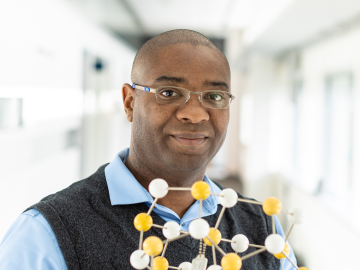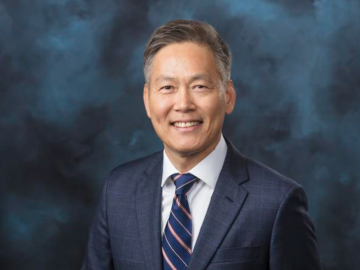
Filter News
Area of Research
- (-) Materials (131)
- (-) Neutron Science (39)
- (-) Supercomputing (54)
- Advanced Manufacturing (8)
- Biology and Environment (48)
- Clean Energy (128)
- Computational Biology (1)
- Computational Engineering (2)
- Computer Science (7)
- Electricity and Smart Grid (1)
- Energy Sciences (1)
- Functional Materials for Energy (2)
- Fusion and Fission (8)
- Fusion Energy (1)
- Isotope Development and Production (1)
- Isotopes (27)
- Materials Characterization (2)
- Materials for Computing (17)
- Materials Under Extremes (1)
- Mathematics (1)
- National Security (39)
- Nuclear Science and Technology (13)
- Quantum information Science (4)
- Sensors and Controls (1)
News Topics
- (-) Clean Water (4)
- (-) Coronavirus (20)
- (-) Cybersecurity (9)
- (-) Energy Storage (41)
- (-) Isotopes (13)
- (-) Machine Learning (16)
- (-) Materials (86)
- (-) Microscopy (29)
- (-) Security (6)
- (-) Space Exploration (7)
- (-) Transformational Challenge Reactor (3)
- 3-D Printing/Advanced Manufacturing (30)
- Advanced Reactors (6)
- Artificial Intelligence (40)
- Big Data (20)
- Bioenergy (21)
- Biology (17)
- Biomedical (30)
- Biotechnology (2)
- Buildings (8)
- Chemical Sciences (33)
- Climate Change (21)
- Composites (9)
- Computer Science (100)
- Critical Materials (15)
- Decarbonization (13)
- Environment (39)
- Exascale Computing (22)
- Fossil Energy (1)
- Frontier (29)
- Fusion (9)
- Grid (9)
- High-Performance Computing (41)
- Irradiation (1)
- ITER (1)
- Materials Science (90)
- Mathematics (1)
- Molten Salt (3)
- Nanotechnology (46)
- National Security (8)
- Net Zero (2)
- Neutron Science (108)
- Nuclear Energy (22)
- Partnerships (11)
- Physics (36)
- Polymers (19)
- Quantum Computing (20)
- Quantum Science (35)
- Renewable Energy (1)
- Simulation (14)
- Software (1)
- Summit (42)
- Sustainable Energy (20)
- Transportation (23)
Media Contacts

Valentino “Tino” Cooper, a scientist at ORNL, has been appointed to DOE’s Basic Energy Sciences Advisory Committee for a three-year term. Cooper’s research elucidates the fundamental understanding of advanced materials for next-generation energy and information technologies.

Andrew Lupini, a scientist and inventor at ORNL, has been elected Fellow of the Microscopy Society of America.

Researchers at ORNL have developed a machine-learning inspired software package that provides end-to-end image analysis of electron and scanning probe microscopy images.

Andrew Ullman, Distinguished Staff Fellow at Oak Ridge National Laboratory, is using chemistry to devise a better battery

Ho Nyung Lee, a condensed matter physicist at the Department of Energy’s Oak Ridge National Laboratory, has been elected a Fellow of the Materials Research Society.

How did we get from stardust to where we are today? That’s the question NASA scientist Andrew Needham has pondered his entire career.

A team of scientists led by the Department of Energy’s Oak Ridge National Laboratory designed a molecule that disrupts the infection mechanism of the SARS-CoV-2 coronavirus and could be used to develop new treatments for COVID-19 and other viral diseases.

A series of new classes at Pellissippi State Community College will offer students a new career path — and a national laboratory a pipeline of workers who have the skills needed for its own rapidly growing programs.

Scientists have long sought to better understand the “local structure” of materials, meaning the arrangement and activities of the neighboring particles around each atom. In crystals, which are used in electronics and many other applications, most of the atoms form highly ordered lattice patterns that repeat. But not all atoms conform to the pattern.

Alice Perrin is passionate about scientific research, but also beans — as in legumes.


